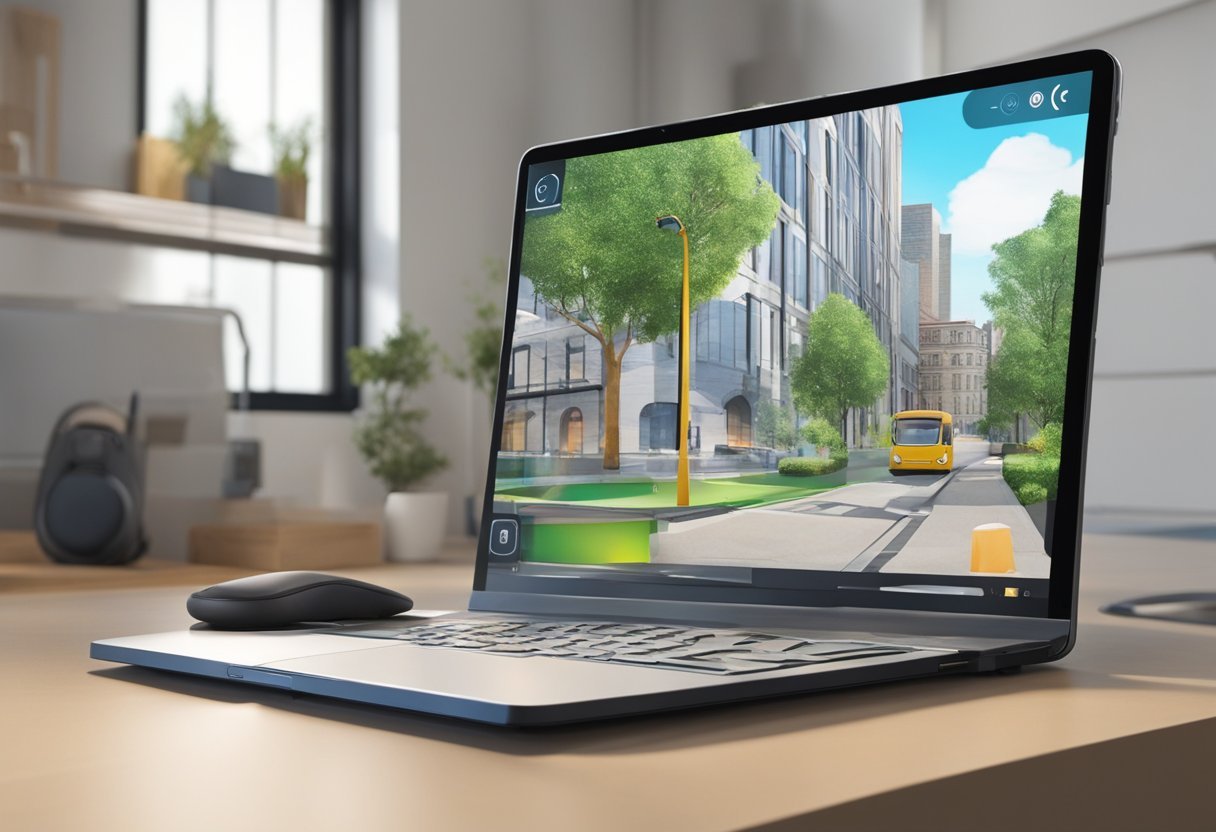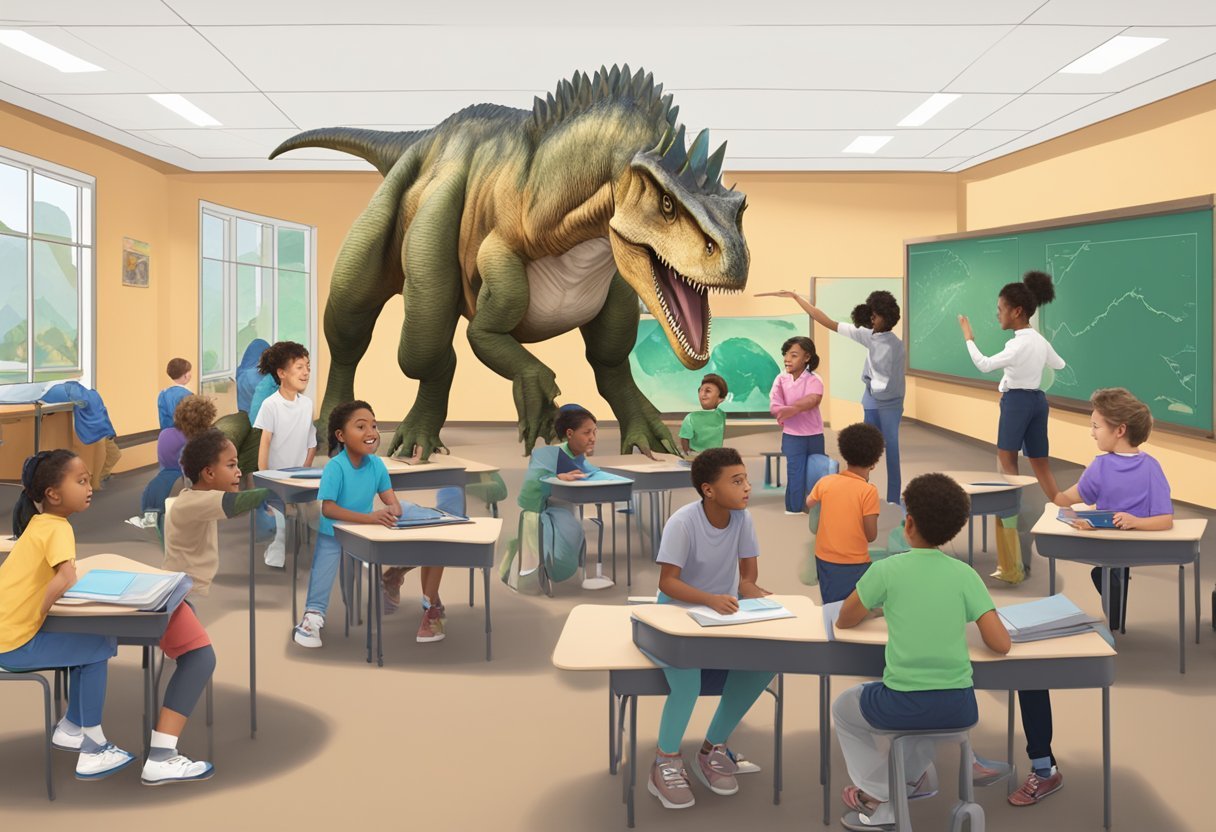Augmented reality (AR) is a technology that has been gaining a lot of attention in recent years. It is a type of immersive experience that allows users to see virtual objects in the real world. AR is different from virtual reality (VR) as it does not replace the real world with a virtual one, but instead enhances it. AR is being used in various fields such as education, entertainment, healthcare, and retail, to name a few. In this article, I will share with the top 15 augmented reality programs and why you should try them.
The fundamentals of augmented reality are based on computer vision, graphics, and sensors. The technology uses computer vision to recognize the real world and overlay virtual objects on it. Graphics are used to create the virtual objects, and sensors are used to track the position and movement of the user. AR can be experienced through various devices such as smartphones, tablets, head-mounted displays, and smart glasses.
Technological foundations of AR include hardware and software components. Hardware components include cameras, sensors, processors, and displays. Software components include AR engines, development kits, and authoring tools. The design and development of AR applications require expertise in computer vision, graphics, and user experience. AR applications can be developed using various platforms such as Unity, Vuforia, ARKit, and ARCore.
Key Takeaways
- Augmented reality enhances the real world with virtual objects and is used in various fields.
- The fundamentals of augmented reality are based on computer vision, graphics, and sensors.
- The design and development of AR applications require expertise in computer vision, graphics, and user experience.
Fundamentals of Augmented Reality
Core Concepts and Definitions
Augmented Reality (AR) is a technology that enhances the real world by adding digital information to it. AR software uses various techniques to overlay 3D graphics on the user’s view of the real world. AR applications are designed to run on mobile devices, tablets, and smart glasses. The AR display is usually a screen or a camera that captures the real world and overlays digital information on it.
AR software uses computer vision to recognize real-world objects, and then it overlays 3D graphics on top of them. AR applications can also use GPS, compass, and accelerometer to track the user’s location and orientation. AR software can also use depth sensors to create more realistic 3D graphics.
AR is different from Virtual Reality (VR) because VR creates a completely virtual environment, while AR enhances the real world with digital information. AR is also different from Mixed Reality (MR) because MR combines the real world and virtual objects in a seamless way.
History and Evolution
AR has been around for several decades, but it has only recently become popular due to advancements in mobile devices and computer vision. The first AR system was developed in the 1960s at Harvard University, but it was not until the 1990s that AR became more widely available. In the early 2000s, AR started to be used in commercial applications such as advertising and gaming.
Today, AR is used in various industries such as education, healthcare, and entertainment. AR is also used in navigation and wayfinding applications, where it can overlay directions and information on the user’s view of the real world. AR is expected to become more popular in the future as technology continues to improve and new applications are developed.
AR is a technology that enhances the real world by adding digital information to it. AR software uses computer vision and other techniques to overlay 3D graphics on the user’s view of the real world. AR has been around for several decades, but it has only recently become popular due to advancements in technology. AR is used in various industries and is expected to become more popular in the future.
15 Best Augmented Reality Programs
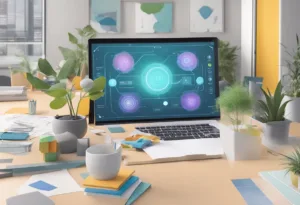
- Vuforia
- ARKit
- ARCore
- Wikitude
- Magic Leap
- Microsoft HoloLens
- Blippar
- Layar
- ZapWorks
- Unity MARS
- Aurasma
- ARToolKit
- EasyAR
- Maxst
- RealWear
Vuforia
Vuforia is a widely recognized augmented reality program that offers advanced computer vision and the ability to recognize and track image targets and 3D objects in real-time. This capability allows developers to create interactive and immersive AR experiences for various applications, including marketing, maintenance, and education.
The program’s robustness in varying conditions and its support for both Android and iOS platforms make it a versatile choice for AR development. Vuforia’s utility features include VuMark, a customizable visual code that can be scanned by devices to deliver unique content, enhancing user engagement and providing a seamless blend of digital and physical worlds.
ARKit
ARKit is Apple’s augmented reality program that allows developers to create high-quality AR experiences for iPhone and iPad users. With its robust tracking and scene understanding, ARKit makes it easy to place virtual objects in the real world and anchor them to specific points in the environment.
The program supports features like face tracking, realistic rendering, and support for 3D object detection, making it a powerful tool for creating interactive gaming, shopping, or design apps. ARKit’s benefits extend to improved user experiences with immersive content that can drive sales, enhance learning, and entertain.
ARCore
Google’s ARCore is an augmented reality program that brings AR capabilities to Android devices. It enables apps to understand the environment, detect the size and location of all types of surfaces, and interact with information in the real world. ARCore’s motion tracking allows the phone to understand and track its position relative to the world, enhancing applications in navigation, gaming, and education. The utility features of ARCore, such as environmental understanding and light estimation, provide realistic and engaging AR experiences, leading to increased user engagement and retention.
Wikitude
Wikitude is an augmented reality program that specializes in providing developers with an AR SDK for creating location-based and marker-based AR experiences. It supports multiple platforms and offers features such as image recognition, tracking, and 3D model rendering.
The program’s flexibility and ease of use make it a popular choice for creating AR apps that offer educational content, interactive guides, and innovative marketing campaigns. The benefits of Wikitude include enhanced user interaction and the ability to deliver contextual information in real-time, transforming the way users perceive their environment.
Magic Leap
Magic Leap is a futuristic augmented reality program that offers a unique spatial computing platform. The Magic Leap One headset provides an immersive AR experience by projecting digital content that interacts with the physical world.
This program is designed for a wide range of applications, from gaming and entertainment to productivity and enterprise solutions. The benefits of Magic Leap include its ability to create lifelike digital experiences that enhance creativity, collaboration, and learning through its mixed reality environment.
Microsoft HoloLens
Microsoft HoloLens is a self-contained holographic computer that enables users to engage with digital content and interact with holograms in the world around them. This augmented reality program is designed for a variety of uses, including education, design, healthcare, and manufacturing.
HoloLens offers a hands-free experience and provides users with tools to create and collaborate in three dimensions, improving workflow efficiency and providing innovative ways to visualize and work with complex data and structures.
Blippar
Blippar is an augmented reality program that focuses on bringing to life everyday objects, print media, and physical products through engaging AR experiences. It allows brands and publishers to create interactive campaigns that can increase consumer engagement and provide detailed analytics on user interactions. Blippar’s utility features include image recognition and AR analytics, which can help businesses understand how their content is being consumed and offer an enhanced level of interactivity to their audience.
Layar
Layar is an augmented reality program that enables users to discover information about the world around them by scanning objects with their mobile device. It provides a platform for interactive print and advertising, allowing users to access multimedia content by scanning magazines, posters, and product packaging. Layar’s benefits include increased user engagement with print media and the ability to provide instant access to digital content, thereby bridging the gap between static print and dynamic online content.
ZapWorks
ZapWorks is an augmented reality program designed to make AR content creation accessible to designers and developers. It offers a suite of tools that support the creation of AR experiences, including interactive cards, product visualizations, and immersive campaigns. ZapWorks enables brands to create engaging content that can drive customer engagement and provide unique and memorable experiences. Its benefits include ease of use, quick content creation, and the ability to track user engagement and ROI.
Unity MARS
Unity MARS is an extension of the popular Unity game development platform, tailored specifically for augmented reality program development. It simplifies the process of creating AR experiences that are contextually aware and responsive to the environment, physical space, and user input. Unity MARS provides creators with tools to build AR applications that can adapt to any type of real-world condition, enhancing the realism and immersion of AR experiences for users across various industries.
Aurasma
Aurasma, now known as HP Reveal, is an augmented reality program that enables users to create and share AR experiences called “Auras.” These Auras can be linked to physical objects and images in the real world, allowing for interactive marketing, education, and storytelling. The program’s utility lies in its ability to turn static images into dynamic, interactive content that can enhance user engagement and provide a more immersive experience.
ARToolKit
ARToolKit is an open-source augmented reality program that provides libraries for the development of AR applications. It supports a range of functionalities, including camera calibration, real-time tracking, and integration with smart glasses. ARToolKit is beneficial for developers looking for a customizable and flexible AR development solution that can be used for various applications, from gaming to industrial simulation.
EasyAR
EasyAR is an augmented reality program that offers a robust SDK for developers to create AR experiences. It features image recognition, 3D object tracking, and environmental understanding, making it suitable for creating interactive games, educational tools, and marketing applications. EasyAR’s benefits include its ease of integration, support for a wide range of platforms, and a cost-effective solution for high-quality AR development.
Maxst
Maxst is an augmented reality program that offers a comprehensive AR platform with features such as 2D and 3D object recognition, visual SLAM (Simultaneous Localization and Mapping), and a versatile AR SDK. This program is designed to facilitate the development of AR applications that require precise interaction with the environment, useful in industries like education, maintenance, and interior design. Maxst’s benefits include its robust tracking capabilities and the ability to create AR experiences that are deeply integrated with the user’s surroundings.
RealWear
RealWear is an augmented reality program geared towards industrial applications. It offers a hands-free, head-mounted wearable computer that provides workers with access to information and expertise while they work. The device is designed for use in rugged environments and allows for voice-controlled operation, making it ideal for field service, manufacturing, and inspection tasks. RealWear
AR Technological Foundations

Augmented Reality (AR) is an immersive technology that overlays digital content onto the real world. The technology has been around for some time, but it is only recently that it has gained mainstream acceptance. AR technology is based on a combination of hardware components and software frameworks and SDKs that work together to create immersive experiences.
Hardware Components
AR technology relies on various hardware components such as smart glasses, mobile devices, and desktop computers. These devices have built-in sensors such as gyroscopes, accelerometers, and cameras that enable motion tracking and image recognition.
Smart glasses have become popular in recent years, with companies such as Vuzix and Epson leading the way. These glasses are equipped with microdisplays, cameras, and sensors that enable users to view digital content overlaid onto the real world.
Software Frameworks and SDKs
AR technology relies on software frameworks and SDKs that enable developers to create immersive experiences. Some popular frameworks include Vuforia Engine, Wikitude, and ARToolKit. These frameworks provide developers with tools to create image recognition, motion tracking, and 3D rendering.
ARCore and ARKit
ARCore and ARKit are two popular AR platforms developed by Google and Apple, respectively. These platforms enable developers to create AR experiences for Android and iOS devices. ARCore and ARKit provide developers with tools to create motion tracking, environmental understanding, and light estimation. The platforms are designed to work with the sensors built into mobile devices, such as cameras and gyroscopes.
AR technology is based on a combination of hardware components and software frameworks and SDKs that work together to create immersive experiences. The technology relies on devices such as smart glasses, mobile devices, and desktop computers, which have built-in sensors that enable motion tracking and image recognition. Popular software frameworks and SDKs include Vuforia Engine, Wikitude, and ARToolKit. ARCore and ARKit are two popular AR platforms developed by Google and Apple, respectively, that enable developers to create AR experiences for Android and iOS devices.
Design and Development of AR Applications
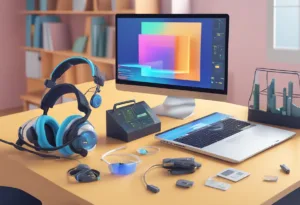
Augmented Reality (AR) applications are software programs that combine real-world environments with digital objects. Design and development of AR applications require a special set of skills and tools. In this section, we will explore some of the key aspects of designing and developing AR applications.
User Interface and Experience
User Interface (UI) and User Experience (UX) are critical components of AR applications. UI is the visual design of the application, while UX is the overall experience of the user. AR applications should have a simple and intuitive UI, with easy-to-use controls. The UX should be seamless, with no lag or delay in the interaction between the user and the application.
3D Object Creation and Integration
3D objects are an essential part of AR applications. These objects need to be created and integrated into the application. Unity is a popular platform for creating 3D objects for AR applications. Once the objects are created, they need to be integrated into the application using formats such as USDZ or AR Quick Look. Object recognition is also an important aspect of AR applications. Machine learning and artificial intelligence can be used to recognize objects and their properties.
Interactivity and Physics
Interactivity is a crucial aspect of AR applications. Users should be able to interact with the digital objects in the real world. Physics engines can be used to simulate real-world physics, making the interaction more realistic. The AR application should also be able to track the user’s movements and adjust the digital objects accordingly.
Designing and developing AR applications require a special set of skills and tools. The UI and UX should be simple and intuitive, while 3D objects should be created and integrated into the application using formats such as USDZ or AR Quick Look. Interactivity should be realistic, with physics engines used to simulate real-world physics.
Applications of Augmented Reality
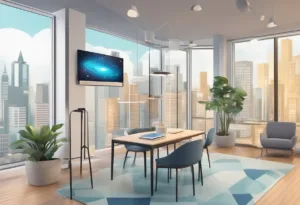
Augmented Reality (AR) is a technology that overlays digital information onto the physical world. AR has a wide range of applications across various industries, including gaming and entertainment, retail and manufacturing, education, and healthcare.
Gaming and Entertainment
AR games have become increasingly popular in recent years, with the success of games such as Pokemon Go and Ingress by Niantic. These games use AR technology to create an immersive gaming experience by overlaying digital objects onto the real world. AR technology has also been used in the entertainment industry to create interactive experiences, such as AR concerts and exhibits.
Retail and Manufacturing
AR technology has the potential to revolutionize the retail and manufacturing industries. Retailers can use AR to create virtual showrooms, allowing customers to visualize products in their own homes before making a purchase. AR can also be used in manufacturing to create virtual prototypes, reducing the time and cost associated with physical prototyping.
Education and Healthcare
AR has the potential to enhance the learning experience by creating interactive and immersive educational content. AR can be used to create virtual field trips, allowing students to explore historical sites and landmarks. In healthcare, AR can be used to create virtual simulations for medical training and to assist with surgical procedures.
AR technology has the potential to transform various industries, from mobile and video games to education and healthcare. With the continued advancements in AR technology, the possibilities for its applications are endless.
Future Trends and Social Impact

The Metaverse and Mixed Reality
The concept of the metaverse has been around for decades, but it is only recently that it has started to become a reality. The metaverse is essentially a virtual universe that is created by the convergence of augmented reality, virtual reality, and other technologies.
As mixed reality becomes more prevalent, the metaverse will become more immersive and interactive, allowing users to experience a new level of virtuality. This will have a significant impact on customer experience, as businesses will be able to create more engaging and personalized experiences for their customers.
AR in Social Media and Communications
Social media and communications are two areas where AR is already having a significant impact. With the rise of AR-enabled smartphones, users can now use AR to enhance their social media posts and communications. For example, Snapchat filters and Instagram’s AR effects allow users to add virtual elements to their photos and videos.
This trend is likely to continue, with more social media platforms integrating AR into their offerings. This has the potential to change the way people communicate and interact with each other, as virtual elements become more integrated into our daily lives.
Ethical Considerations and Society
As with any new technology, there are ethical considerations that need to be addressed. AR has the potential to impact society in a number of ways, both positive and negative. For example, AR has the potential to enhance education and training, allowing learners to experience virtual environments that are otherwise inaccessible.
However, there are also concerns about the impact of AR on privacy, as AR devices can collect data about users’ surroundings and activities. There are concerns about the impact of AR on social interaction, as virtual elements become more integrated into our daily lives.
AR is a rapidly evolving technology that is having a significant impact on society. As mixed reality becomes more prevalent, the metaverse will become a reality, changing the way we experience virtuality. AR is also having a significant impact on social media and communications, allowing users to add virtual elements to their posts and messages. However, there are also ethical considerations that need to be addressed, as AR has the potential to impact society in both positive and negative ways.
Frequently Asked Questions
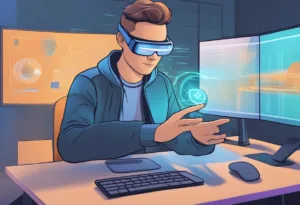
What are the best entry-level augmented reality software options for beginners?
There are several entry-level augmented reality software options that beginners can use. Some of the most popular ones include ARToolKit, Vuforia, and AR.js. These programs are easy to use, and they come with tutorials and documentation that can help beginners get started.
Which AR/VR applications are currently leading the market?
Some of the leading AR/VR applications in the market include Microsoft HoloLens, Oculus Rift, and Magic Leap. These applications are used in various industries, including gaming, healthcare, and education.
Are there any free augmented reality programs available for use?
Yes, there are several free augmented reality programs available for use. Some of the most popular ones include ARToolKit, Vuforia, and AR.js. These programs are open-source, and they can be used for both personal and commercial purposes.
Can you provide examples of augmented reality programs used in education?
Yes, there are several examples of augmented reality programs used in education. Some of the most popular ones include Anatomy 4D, Elements 4D, and AR Flashcards. These programs are used to enhance the learning experience by providing interactive and engaging content.
What augmented reality software is recommended for architectural design?
Some of the most recommended augmented reality software for architectural design include SketchUp Viewer, ARki, and Roomle. These programs are used to visualize and design buildings and structures in a 3D environment.
Which augmented reality tools are most suitable for construction projects?
Some of the most suitable augmented reality tools for construction projects include HoloBuilder, Augment, and Trimble Connect. These programs are used to visualize and plan construction projects, and they can help to improve efficiency and reduce errors.

